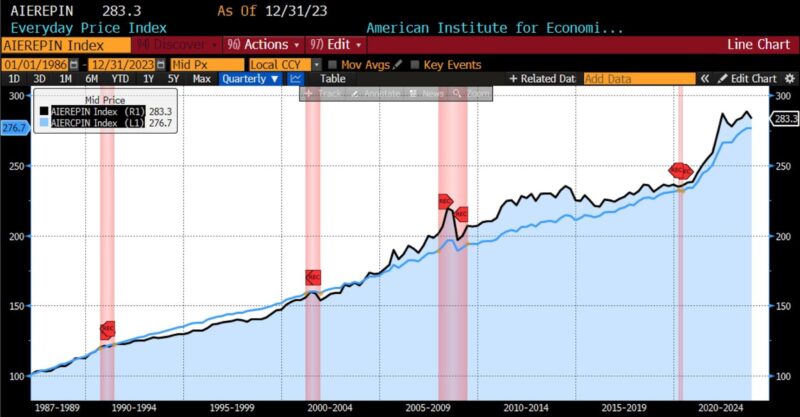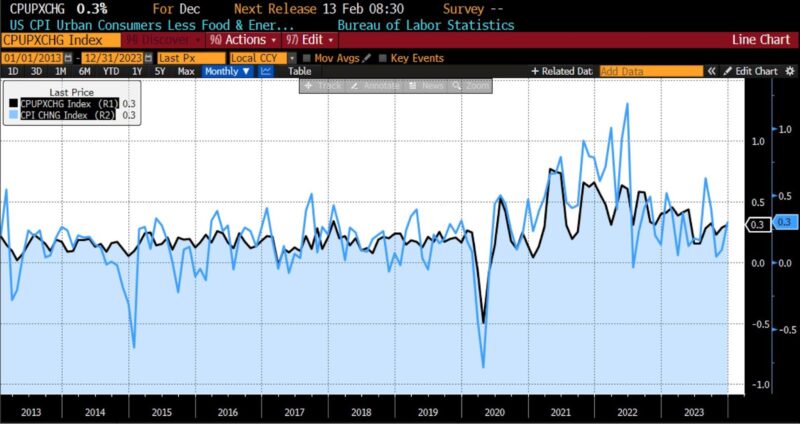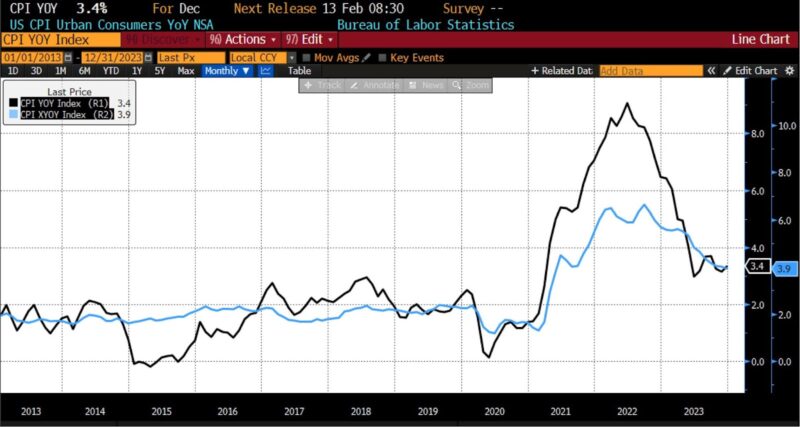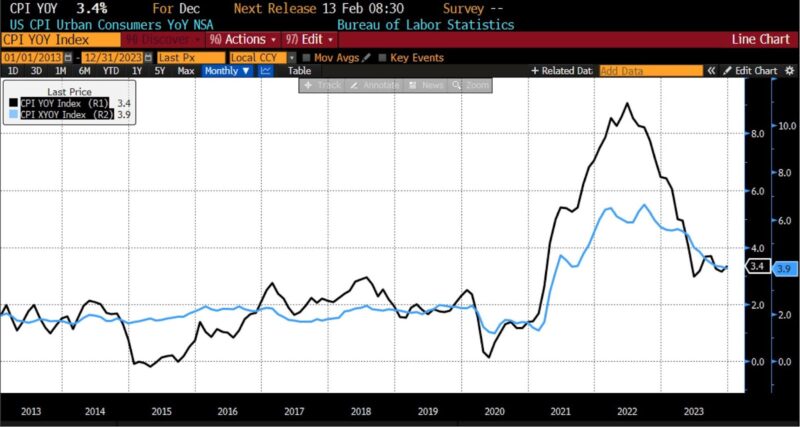AIER’s Everyday Price Index Ends 2023 with Third Consecutive Monthly Decline

In December 2023, the AIER Everyday Price Index (EPI) fell 0.55 percent to 283.3. It is the third consecutive decline in the index, and brings the 2023 change in the Everyday Price Index to 1.87 percent.
AIER Everyday Price Index vs. US Consumer Price Index (NSA, 1987 = 100)

Within the December 2023 EPI, the largest monthly price increases occurred in the following categories: food away from home, housing fuels and utilities, cable satellite & live streaming TV services, and admissions to movies, theaters, & concerts. The largest price declines were seen in the food at home, personal care products, and motor fuel groupings. In December 2023, the prices of twelve EPI components rose, two were unchanged, and ten declined.
On January 11th the US Bureau of Labor Statistics (BLS) released Consumer Price Index (CPI) data for December 2023. The month-to-month headline CPI number rose 0.1 percent, exceeding surveys expecting no change (0.0 percent). The core month-to-month CPI number rose 0.3 percent, as surveys anticipated.
Within the headline CPI on a month-to-month basis, the largest increases were among meats, poultry, fish, and eggs, which were led by an 8.9 percent increase in the index for eggs. Food away from home and electricity also rose substantially in price. Prices declined from November to December in cereals and bakery products, natural gas, and fuel oils.
In the month-to-month core CPI shelter, owners’ equivalent rent, lodging away from home increased substantially in price, as did motor vehicle insurance, used cars and trucks, recreation, new vehicles, education, and airline fares. Falling in price from November to December 2023 in the core CPI index were prescription drugs, household furnishings, and personal care items.
December 2023 US CPI headline & core month-over-month (2013 – present)

From December 2022 to December 2023, headline CPI rose 3.4 percent, which were higher than expectations of a 3.2 percent reading. Core CPI year-over-year also increased more than expected, lifting 3.9 percent instead of 3.8 percent. On a year-over-year basis, headline CPI saw large price rises in food away from home and electricity, with declines in gasoline, natural gas, and field oil. Core CPI from December 2022 to December 2023 was lifted by prices of shelter (which accounted for over two thirds of the total increase), motor vehicle insurance, recreation, personal care, and education.
December 2023 US CPI headline & core year-over-year (2013 – present)

From December 2022 to December 2023, headline CPI rose 3.4 percent, which were higher than expectations of a 3.2 percent reading. Core CPI year-over-year also increased more than expected, lifting 3.9 percent instead of 3.8 percent. On a year-over-year basis, headline CPI saw large price rises in food away from home and electricity, with declines in gasoline, natural gas, and field oil. Core CPI from December 2022 to December 2023 was lifted by prices of shelter (which accounted for over two thirds of the total increase), motor vehicle insurance, recreation, personal care, and education.
December 2023 US CPI headline & core year-over-year (2013 – present)

All-in-all the December 2023 CPI report revealed unexpectedly robust results, suggesting that achieving the Fed’s sustained 2-percent target range will continue to confront obstacles along the way. The recent reduction in disinflationary pressures related to core goods, which had been a significant factor in easing price pressures in recent months, seems to have diminished.
Achieving a sustained decline in inflation, particularly below the level needed, faces a significant hurdle in the form of slow disinflation in core services, excluding housing, at times called the “supercore” sectors. Numerous businesses have already declared their intention to enact substantial price hikes in 2024. California’s largest insurer, for example, intends to raise housing insurance premiums by 20 percent and car insurance premiums by 25 percent. Furthermore, over half of US states are slated to increase the minimum wage, with Florida raising it by as much as 18 percent this year, and California boosting minimum wages for fast-food workers by a substantial 30 percent.
Meanwhile, escalating shipping expenses and a surge in oil prices have sparked concerns about a global resurgence of inflationary pressures. Manufacturers and retailers are now grappling with disruptions and heightened costs due to ongoing Houthi rebel attacks in the Red Sea, which disrupt a vital shipping route through the Suez Canal. Freight rates for transporting goods from Asia to Europe have skyrocketed by over 100 percent in the past four weeks. Additionally, fears of a wider regional conflict have pushed oil prices upward. Following a military response led by the U.S. and UK in response to these attacks as this article goes to print, the global benchmark Brent crude experienced an increase of up to 4.3 percent, briefly surpassing the $80 per barrel mark. A swift and linear continuation of the ongoing disinflationary trend, in addition to expectations of Fed rate cuts starting as early as March 2024, may be overly optimistic on account of these factors.








